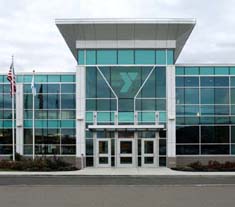 |
|
Tacoma Recovery & Transfer Center, Tacoma, Wash., |
Contractors need to have insurance coverage to protect themselves and their businesses. There are a number of project concerns, including course of construction, timelines, change orders, accidents and contract administration. Also, there are a number of large and small insurance companies that have specialties in construction insurance, including property and casualty, risk management and commercial general liability. When discussing insurance options with a broker, it’s important to get coverage that is customized to help reduce the contractors’ cost of risk, while improving their bottom line. Account size, contractor type, risk exposure, geographic area and line of business are just some of the things that Hartford, Conn.-based The Travelers Cos. Inc.’s specialized construction team takes into consideration when providing solutions to a range of small, mid-size and large contractors.
San Francisco-based Gallagher Construction Services helps contractors evaluate their exposures to financial loss and consider the costs of obtaining coverage to offset that risk. According to Brian Cooper, managing director, in design-build contracts where the manufacturer provides the design and the erector may be held responsible as the general contractor for erection and design, it is critical that this design exposure is address properly, since general liability policies exclude “professional acts.” “If the general contractor/erector is relying on the manufacturers’ insurance for this exposure, it is critical that it is reviewed by their broker to make sure they are afforded additional insured status,” he says. Cooper goes on to note that all exposures need to be addressed by contractual risk transfer of insurance programs properly structured to address these issues.
With the help of Cooper and ISO, Jersey City, N.J., a leading source of information about property/casualty insurance risk, Metal Construction News put together a list of five things to keep in mind when looking into insurance for your next metal building project.
1. Fire
ISO notes that building components such as flammable insulation or EIFS in conjunction with metal could increase the fire risk, change the construction class and potentially increase the loss cost. Cooper adds that unprotected steel tends to warp and is very susceptible to total destruction from fire. ISO also notes that while metal construction does not typically add to the fire, it can fail faster than wood construction. Cooper says that calculations shows that the web of an 18-gauge steel stud is approximately 30 times thinner than a “two-by” wood stud. However, he adds, steel conducts heat 310 times more efficiently than wood, resulting with a “two-by” steel stud conducting 10 times more heat than a “two-by” wood stud.
2. Insulation
In addition to the outer skin, ISO notes that insulation is a very important component for insuring metal buildings, especially if it is combustible. The use of spray foam insulation, even if tested by an ISO-approved testing lab with a flame spread of 25 or less, must have an adequate thermal barrier to be considered Slow Burn under SCOPES, they note. Otherwise listed foam is considered ordinary combustible. “Insulation is a large-scale difficulty with steel buildings,” Cooper says. He adds that steel buildings require added insulation, since steel is not a very good insulator on its own.
3. Wind Loads and Uplift
If your project includes a wind uplift design, ISO says that UL 90 certification, or the use of a 22-gauge roof deck can lead to substantial insurance savings. However, ISO notes that skylights will nullify UL 90 certification, unless listed. ISO requires UL 90 certificate documentation for verification.
4. Building Support
Preventing and protecting yourself from steel that can fracture is essential. “Constant tension and stress caused by the overall weight of a building contributes to the wear and tear of the steel,” Cooper says. “Structural engineers and architects resolve this by including additional support systems. These systems range from additional steel columns to complex brace systems, ensuring the stability and strength of steel buildings.”
5. Earthquake Classification
Contractors should be aware of the requirements to have their building evaluated for earthquake classification, ISO says. The construction documents required include drawings, specifications, soil reports, quality control requirements, inspection records and other documents pertaining to the construction of the building. ISO adds that small metal buildings, one-story in height, have exhibited good performance in past earthquakes, possibly due to their light mass. Such buildings are often assigned to seismic building class 1 without need to review.
 |
| Hornell Area Family YMCA, Hornell, N.Y., by Tedesco Construction Services Inc., Lewiston, N.Y. |
Other Resources
Intended to help construction contractors determine the precise scope of their current insurance coverage, the Associated General Contractors of America (AGC), has an Insurance Checklist available on their website at www.agc.org. Completed in conjunction with an insurance broker, the form should help stimulate a discussion, identifying cost-effective ways to fill any significant gaps in the contractor’s insurance coverage.
The AGC also has an AGC Risk Profiler, which can be used as a companion to the Insurance Checklist, to create, save and continuously update a profile of the business activities that expose construction contractors to significant risks of either loss or liability. The form’s first section asks about the type of work a contractor performs, along with its ownership and size. Subsequent sections get into other details. Once completed, construction contractors should be able to better assess their insurance and other risk management programs. Along with an insurance broker, the form should help identify cost-effective ways to manage the contractor’s risks of either loss or liability.
*Photos courtesy of VP Buildings Inc., Memphis, Tenn.





